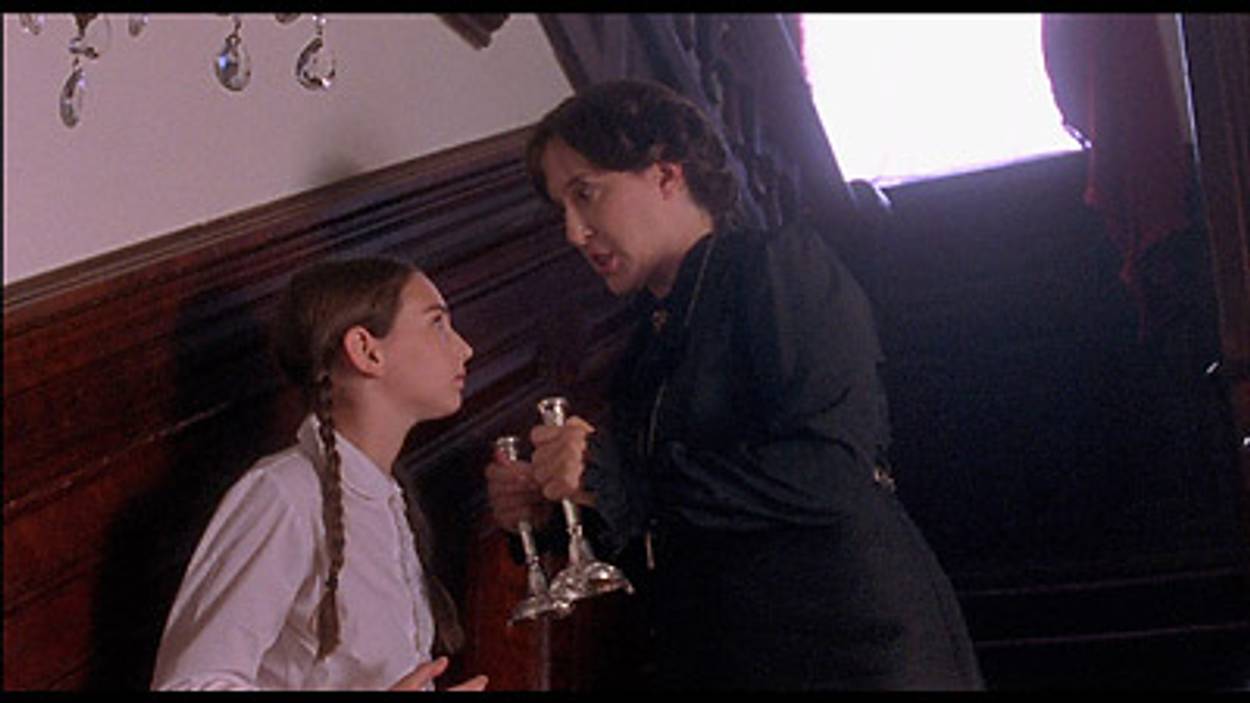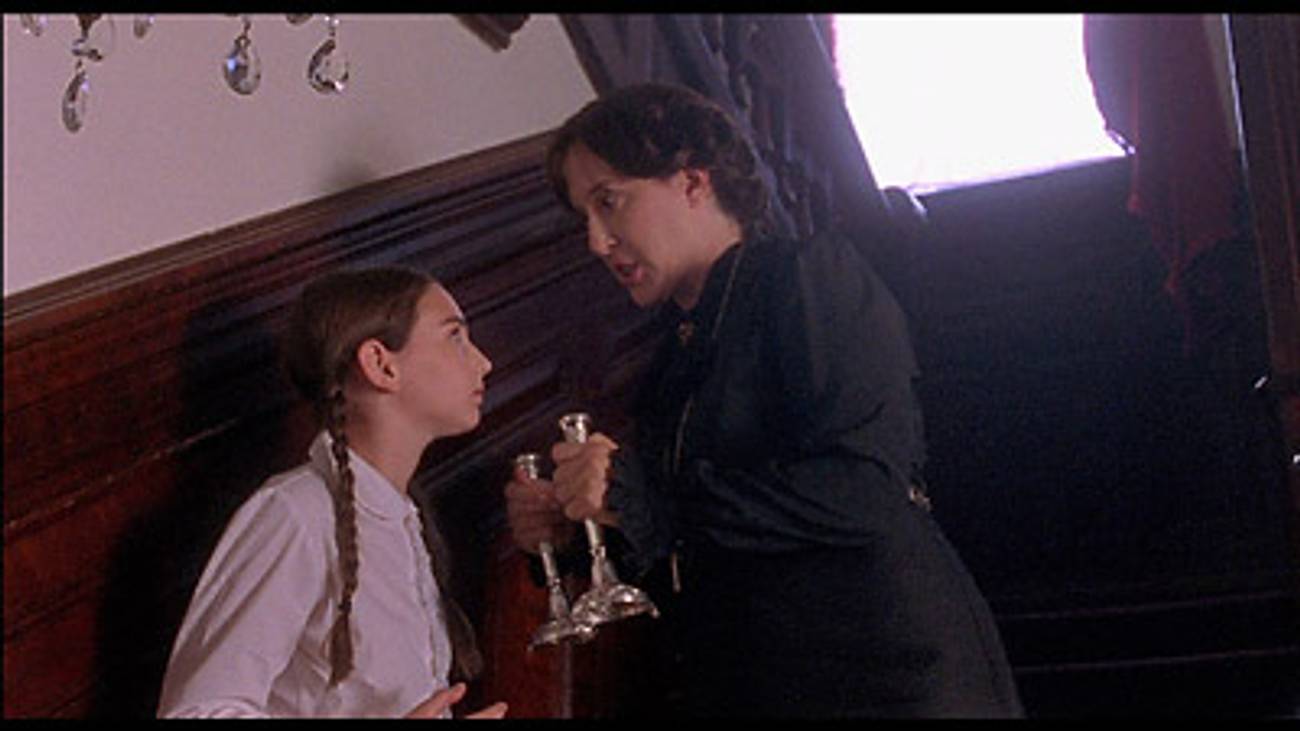The Hard-Knock Life
An Orthodox Annie takes the frum world by storm




Earlier this month, lines of girls in dark, sober dresses shuffled into the auditorium of the Jewish Children’s Museum in Brooklyn for a screening of A Light for Greytowers, a film produced by Kol Neshama, an all-female performing arts conservatory in Los Angeles. As soon as the crowd settled into their seats, Robin Garbose, the founder of Kol Neshama, walked onto the stage and took the mic. “Raise your hand if there’s an empty space by you!” She called. “We need more chairs!” Garbose, who directed, wrote, and produced the film, is a petite woman with a large, flashy smile and a brown wig falling just past her shoulders.
“I am absolutely thrilled that you all could make it today. The girls of Kol Neshama and I put our heart and soul into this film and I know you’re going to love it!” Garbose enthused before taking her seat in the theater. The lights dimmed. For the following ninety minutes, the three hundred girls in the audience—and their mothers—sat rapt before the screen. A Light for Greytowers is a kind of Annie for the Orthodox set, complete with a plucky heroine, a scratchy-voiced headmistress, and a series of catchy dance numbers that are less about dancing than about picturesque orphans scrubbing and sweeping to the command of a whistle.
Despite the clichés, A Light for Greytowers covers some serious historical ground. Set at the turn of the century, the film follows the prepubescent Miriam Aronowitch from Russia to England, where she and her mother seek refuge from the pogroms. When her mother falls ill, Miriam is bundled off to an orphanage, where the evil Miss Grimshaw prohibits religious observance. Abby Shapiro, who plays Miriam, has a lush, transcendent voice, and when she sings, “Hashem will guide us through the night,” you can’t help but believe her. Of course, it turns out that Hashem does indeed have Miriam’s back. She quickly discovers that all the girls in the orphanage are Jewish and persuades them to pick up the shreds of their faith. Soon, they’re refusing to eat non-kosher foods or work on the Sabbath, and endlessly breaking into religious song. The movie ends with the expected miracle: Miriam’s parents saunter into the orphanage and save their daughter from doom.
After the screening, a flock of mothers rushed towards Garbose, asking how they could enroll their daughters in Kol Neshama. Back in 2000, when Garbose launched the project, parents within the religious community were not quite so eager to sign their daughters up, fearing they would be lured into the glitzy world of showbiz—or, at the very least, be exposed to some racy material. Garbose responded to this skepticism by signing on a rabbi to guide the conservatory’s singing, dancing, and acting classes (which she teaches), as well as the films and live stage productions, and only offers screenings of the films to all-female audiences.
Now approaching its ninth summer, the conservatory has produced eight original plays (also for all-female audiences), three musical DVDs (a series of after-school-special-style videos exploring female adolescence at the fictional summer camp Bnos Yisrael), two CDs (the soundtrack to the film and to the DVD series) and, of course, a motion picture. Garbose selects her Kol Neshama participants based less on raw talent than on “how badly they want it, how enthusiastic they are.” For Garbose, the conservatory is about bringing art to a community that is thirsty for it. “The religious Jewish art scene was ruined after the Holocaust and I want to bring it back,” she says.
From a very young age, Garbose found herself searching for God—or at for least a deeper spiritual engagement than she could find at her Conservative synagogue in Holyoke, Massachusetts. During her teen years, she binge-read Holocaust books. “I was very frightened by death. I saw it as this big black abyss beyond! I was on a certain quest to find meaning. And as I got older, I became more conscious of this quest.”
She studied theater at Brown, then moved to New York, where she spent her days assisting the artistic director of the Phoenix Theatre Ensemble and her nights on the party circuit with John F. Kennedy, Jr. and Laura Linney. After teaching acting at Juilliard and NYU, she moved to Los Angeles to work on Head of the Class, as a director.
Still suffering from spiritual malaise, she joined a kabbalah class run by the local Breslov Chassidus chapter. The teacher, she says, told mystical tales “that really spoke to the soul.” Garbose began growing more religious, and within a few months she became Hasidic. “It was challenging to my parents at first,” she says. “They saw this world as lacking a certain beauty, a certain glamour. To them, it was old-fashioned.”
Garbose’s faith was also a liability to her career, with the Head of the Class crew—like most of the television world—working well into Shabbat hours. Unfazed, Garbose quit and took a job with America’s Most Wanted, which had a more flexible production schedule. She spent her Friday nights attending Shabbat dinners in Los Angeles’s Hasidic community, where she met young girls whose eyes would brighten when she waxed nostalgic about her theater days. In early 2000, Garbose applied to the Los Angeles Jewish Community Foundation for funds to start Kol Neshama, and in the summer of 2001 the conservatory opened its doors in a rented studio space in the heart of Los Angeles’s Orthodox community, between the Hancock Park and Pico Robertson neighborhoods.
Today, the conservatory offers Sunday and after-school classes throughout the year where girls prepare for Hanukkah plays and Purimspiels, as well as a summer program, which draws about thirty-five girls between the ages of eight and eighteen. Since A Light for Greytowers, however, far more girls have shown interest than Garbose has room to accommodate. She hopes, in the next year or two, to move the conservatory to a campus or camp setting (currently, out-of-town students are housed with families), which could accommodate two hundred girls per session. Money for the expansion would come from the private sector, Garbose explains. “We have a lot of investors who see Kol Neshama—especially the film—as a financially viable niche market.”
In marketing the film, Garbose has so far concentrated on her niche market: the religious communities of New York, New Jersey, and Los Angeles. But she plans to corner the secular world as well, while still screening to all-female audiences (she is, she says, in the midst of negotiations with a distributor undaunted by the restriction).
Since there are few pockets of the secular showbiz world hospitable to frum actresses, the stars of A Light for Greytowers—now in their teens—have not tried their luck in Hollywood, but many have become celebrities in the frum world, and are recognized on the street in religious neighborhoods. Some of the program’s alumni are bringing what they’ve learned at Kol Neshama to their own communities. Hadas Gross, who played one of the orphans in the film, is now teaching a drama program in her hometown of Lakeview, New Jersey. And Judy Winegard, who played the headmistress, will be starring in a one-woman show, produced by Garbose, in Crown Heights in November.
“There is an emerging movement in the Orthodox world of female performing arts,” says Garbose, though it’s not clear, outside of Kol Neshama, how this movement is manifesting itself. For now, the Orthodox theater world seems to be a one-woman show of its own, with Garbose as writer, director, producer, and lead. The story of her own life, in a way, offers precisely the right message for a Kol Neshama production: a coming of age story, with a clean, religious ending.
A Light for Greytowers will be shown on June 23 and June 24, at different locations in the New York area. For more information and ticketing go to www.kolneshama.org.